German philosopher Immanuel Kant was a key figure in the Enlightenment movement. His writings have served as the foundation for philosophical criticism, and his quotations have become historical landmarks. There are two distinct phases in the development of Western European philosophy—pre-Kantian and post-Kantian—due to Kant’s enormous influence on the direction of scientific thought.
Early Life And Adolescence
On April 22, 1724, in the Prussian outskirts of Königsberg (now Kaliningrad), Kant was born into a devout family. His mother, Anna Regina Kant, was a homemaker, while his father, Johann Georg Kant, was a skilled craftsman who manufactured saddles.
Immanuel was the fourth of the family’s more than ten children to be born. Many of the infant deaths were due to diseases. Two sons and three daughters made it out alive.
Kant grew up surrounded by laborers and craftspeople in the suburbs. Regarding the philosopher’s nationality, historians have long disagreed; some have claimed that his paternal forebears were from Scotland. This presumption was stated by Immanuel in a letter addressed to Bishop Jacob Lindblum. This information hasn’t been formally verified, though. It is known that Kant’s maternal relatives were in Nuremberg, Germany, and that his great-grandfather was a businessman in the Memel area.
Because of his parents’ dedication to Pietism, a unique movement within Lutheranism, Kant was able to obtain a spiritual education. Its main idea is that since God is watching over everyone, personal piety was prioritized. Along with imparting a love of the outside world, Anna Regina taught her son the fundamentals of Christianity.
The kids went to Bible studies and sermons with the pious Anna Regina. Franz Albert Schulz, a theologian, frequently paid the Kant family visits and saw that Immanuel was becoming proficient in his study of the Bible and his ability to articulate his own ideas.
On the recommendation of Schulz, Kant’s parents enrolled their eight-year-old son in the Friedrichs-Kollegium, one of Königsberg’s top schools, so that he may have a distinguished education.
Kant spent eight years in school, from 1732 to 1740. The start of classes was at seven in the morning and they went till sunset. In addition to geography, Latin, German, French, and Greek, students also studied theology and the Old and New Testaments. Immanuel thought that philosophy was taught in schools in an inaccurate manner, even though it was only taught to seniors. Pay for mathematics sessions was optional for the pupils.
The kid was inspired by the Latin lectures and desired to become a literature teacher, but Anna Regina and Johann Georg wanted their son to become a priest. Because of his intelligence and sharp wit, the future philosopher studied hard, but he disliked the rigid norms and regulations of the Catholic institution.
Anna Regina passed away when Immanuel was fourteen years old. The big family was struggling to make ends meet. The young man was fed by wealthier classmates, had nothing to wear, and not enough money for meals. At times, Kant had to ask friends for shoes because he didn’t always have any. However, the youngster approached every problem from a philosophical perspective, asserting that things follow him rather than the other way around.
When Kant enrolled at the University of Königsberg at the age of sixteen, his Wolffian and Pietist professor Martin Knutzen introduced him to Isaac Newton’s discoveries. They profoundly altered the student’s perspective on the world. Despite the challenges, Immanuel studied diligently. The natural and exact sciences—philosophy, physics, and mathematics—were the philosopher’s favorites. Only once did Kant attend a theology class, out of reverence for Pastor Schulz.
Immanuel Kant’s Philosophical Concepts
Scholars categorize Immanuel Kant’s philosophical writings into two distinct periods: pre-critical and critical. The pre-critical age is characterized by the development of scientists’ scientific ideas and their gradual freedom from the Christian von Wolff school, which dominated German philosophy at the time. The concept of metaphysics as a science and the development of a new curriculum predicated on the idea of the activity of consciousness are the pivotal moments in Kant’s work.
Under the guidance of Martin Knutzen, Immanuel composed his first composition, “Thoughts on the True Evaluation of Living Forces,” while attending the university. His uncle Richter, a shoemaker, provided financial support for the work’s publication, which took place in 1749.
Due to financial difficulties, Kant was unable to complete his education at the university. Johann Georg died in 1746, and Immanuel had to work as a home teacher to support his brother and two younger sisters. He taught affluent youngsters for nearly 10 years, and during his free time, he composed philosophical pieces that served as the inspiration for his major works.
Reentering the University of Königsberg in 1755, Kant presented his dissertation “On Fire” for defense and was awarded a master’s degree. Following his degree in knowledge theory (“A New Illumination of the First Principles of Metaphysical Knowledge”), he started teaching logic and metaphysics at the university in the fall.
During Immanuel’s pre-critical time, his cosmogonic work “General Natural History and Theory of the Sky” piqued the curiosity of specialists since it discussed the universe’s creation. The author used physics, not theology, in his work.
He also investigated the notion of space from a physical perspective during this time, demonstrating the presence of a higher mind that is the source of all living phenomena. The physicist held that God exists if there is matter. The philosopher argues that one has to acknowledge the need for someone to exist who supports material objects. In his seminal essay, “The Only Possible Basis for Proving the Existence of God,” Kant expounded on this concept.
When the philosopher started teaching logic and metaphysics at the university, a pivotal time in his career started. Kant’s theories evolved gradually rather than all at once. At first, he had different ideas about time and place.
Kant published some of his best works on aesthetics, ethics, and epistemology during the critical period. These works later became foundational texts of German classical philosophy. In 1781, the seminal work “Critique of Pure Reason”—which expounded on the concept of the categorical imperative—was added to the thinker’s scientific biography. The book “Critique of Practical Reason” (1788) was the logical continuation of the philosophical work.
Several notable philosophers, such as Friedrich Nietzsche, Arthur Schopenhauer, and Georg Hegel, were affected by Kant’s writings.
Individual Life
Although Kant was not very attractive—he was small, had narrow shoulders, and a sunken chest—he made an effort to maintain his appearance and frequently went to the hairdresser and tailor. At social gatherings, the philosopher dazzled not only with his wit and brilliance but also with his attire. Joking that “it is better to be a fashionable fool than an unfashionable fool,” he described himself as a “elegant master.” The Countess Charlotte Caroline Amalia von Keyserling painted the philosopher’s first portrait. The professor was a frequent visitor to the homes of aristocrats and wealthy people in Königsberg.

The scientist believed that romantic relationships would impede his ability to do scientific research, hence he never got his personal life right. Kant, however, admired and delighted in the beauty of women. Due to his advanced age and blindness in his left eye, he requested that a young attractive woman sit to his right during supper.
Whether Kant was in love is unknown. In her latter years, Louise Rebecca Fritz recalled that he had liked her. Ludwig Ernst Borovsky, Kant’s biographer, added that the scientist had two loves and wanted a marriage. The philosopher actually lacked the resources necessary to maintain a family.
The philosopher didn’t become affluent and acquire property until he was elderly. He owed his capital to his buddy, the prominent banker Robert Motherby of Königsberg, to whom he gave his money to handle.
Way of Life
The scientist had been unwell since birth; these kids typically didn’t make it to adulthood. Furthermore, Immanuel outlived his friends who were in good condition despite suffering a severe head injury in his early years.
Kant created his own personal grooming regimen. It started for him at five in the morning. He walked to his study without changing out of his pajamas, where his helper Martin Lampe got his master a smoking pipe and a cup of weak green tea. Martin remembered that the scientist had an odd habit of wearing his cocked hat over his cap while he was in his research. He read the speech outline and sipped tea carefully for two hours. He also smoked tobacco.
The lecture hall was filled with enthusiastic students when the lecturer arrived at seven in the morning. Sometimes, there weren’t even enough seats. He spoke slowly and humorously while explaining philosophical concepts. Kant gave a two-hour lecture, after which he went back to his office and put on a cocked hat, night clothes, and a cap. At his workstation for three hours and forty-five minutes.
The philosopher then got ready for a dinner party and gave the cook instructions to set the table because he disliked eating by himself, especially since he only had one meal a day. The only thing lacking from the two or three hours of supper that it lasted was beer. The table was piled high with food. Kant thought that beer tasted terrible, unlike wine, and he did not like the malt beverage.
Using his favorite spoon, which he kept with his money, the professor dined. They talked about current events around the table, but not philosophy.
Every day there was a walk along the same path after lunch. Because he was scared of getting a cold, Kant always strolled by himself. He avoided talking to people and avoided breathing through his mouth when it was chilly.
Death
Kant predicted in his youth that he would live to be 80 years old, but he passed away two months before then. The 75-year-old philosopher’s body started to deteriorate despite his regimen: first, his physical strength abandoned him, and then, his mental clarity started to go. The professor was too old to offer lectures, and the only people he ate supper with were his close friends.
The scientist stayed home and gave up his favorite walks. He made an attempt to compose an essay titled “A System of Pure Philosophy in Its Entirety,” but lacked the necessary writing skills.
Later, as Kant’s life drew to an earlier end, he started to lose words. The eminent thinker passed away on February 12, 1804. Although an autopsy was not conducted, contemporary physicians believe degenerative dementia to be the most likely cause of death based on information provided by the scientist’s biographers.
The philosopher is buried on an island bearing his name, next to the Königsberg Cathedral.




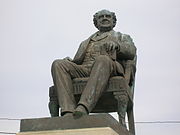 1873. A year after divorcing Charity, he wed Nancy Fish, his second wife, with whom he shared his final years.
1873. A year after divorcing Charity, he wed Nancy Fish, his second wife, with whom he shared his final years.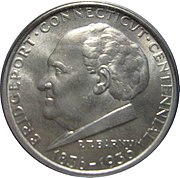










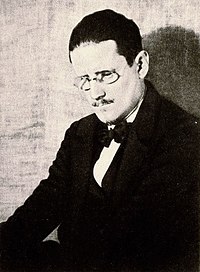






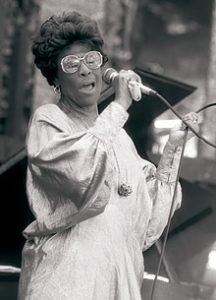












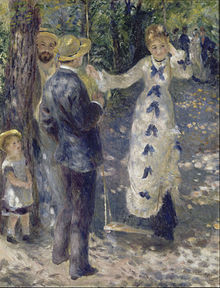











 Democracy, according to Benjamin Franklin, is “a treaty of rules between well-armed gentlemen.” Long before Adam Smith, he developed and supported the theory of value, designating labor as its unit of measurement rather than money. Benjamin Franklin began writing an autobiography in the early 1770s and continued until 1790, but he never finished it. The politician intended to publish it as an official memoir of his most memorable experiences in the future. The “Autobiography” book was released following Franklin’s passing.
Democracy, according to Benjamin Franklin, is “a treaty of rules between well-armed gentlemen.” Long before Adam Smith, he developed and supported the theory of value, designating labor as its unit of measurement rather than money. Benjamin Franklin began writing an autobiography in the early 1770s and continued until 1790, but he never finished it. The politician intended to publish it as an official memoir of his most memorable experiences in the future. The “Autobiography” book was released following Franklin’s passing.





